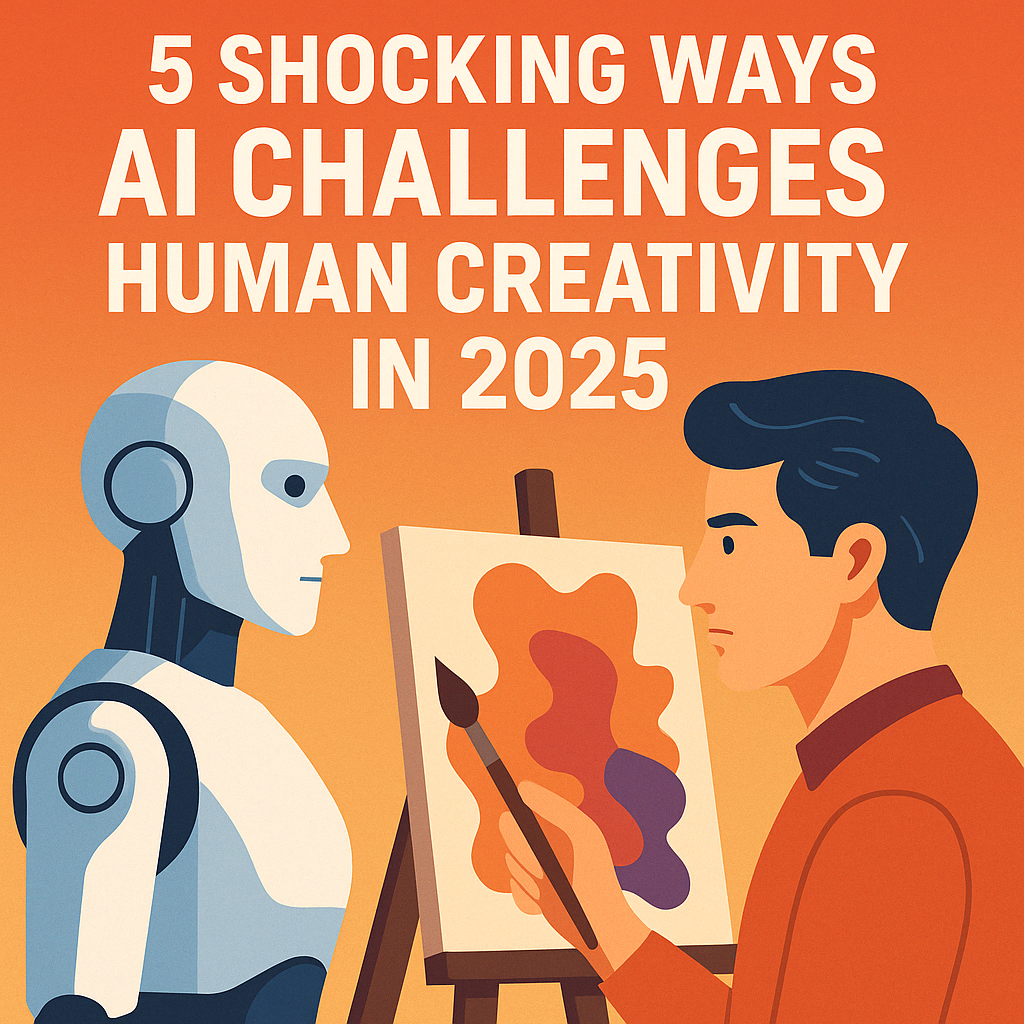In 2025, AI challenges human creativity in ways that were once unimaginable. As artificial intelligence evolves, it’s not just mimicking creativity—it’s pushing its boundaries. The debate continues: can machines genuinely create, or are they just reflecting what humans have already done?
Let’s explore five shocking ways AI is transforming the creative landscape and what it means for artists, designers, writers, and musicians.
1. AI Challenges Human Creativity in Art and Painting
AI-generated artwork has taken a dramatic leap. Tools like Midjourney and DALL·E can now produce paintings that are displayed in galleries and sold to collectors. These tools don’t just replicate existing art styles—they blend and remix them to create entirely new visuals. This is one of the clearest examples of how AI challenges human creativity in the world of visual expression.
2. AI Storytellers and Script Co-Writers
Writers are increasingly turning to AI for help with storytelling. Tools like ChatGPT and Sudowrite are assisting in character development, plot structuring, and dialogue generation. In some cases, AI contributes more than just support—it becomes a full-on co-writer. This development raises ethical and philosophical questions: if AI can write a novel, is the creativity truly human?
3. AI-Composed Music That Moves People
Music generated by AI has become more emotional and structured. Platforms like AIVA and Amper Music produce compositions for films, games, and YouTube channels. The shocking part is that listeners often can’t tell whether a human or a machine composed the piece. This truly highlights how AI challenges human creativity in the music industry.
4. Fashion, Architecture, and Design with AI Direction
Designers in fashion and architecture are now using AI to generate innovative ideas. AI analyzes consumer data and trends to create designs that are not only visually appealing but also optimized for market success. Whether it’s a building blueprint or a fashion collection, AI-driven creativity is entering industries once ruled by instinct and experience.
5. AI and the Philosophy of Creativity
Perhaps the most profound way AI challenges human creativity is through the redefinition of creativity itself. If machines can generate content that humans find beautiful, emotional, or meaningful, what does that say about the uniqueness of human expression? This question is pushing artists and philosophers alike to reconsider the essence of creativity in the digital age.
AI in Education, Journalism, and Social Media
Another field where AI challenges human creativity is education. AI tutors and personalized learning tools are transforming how students interact with content. These systems adapt in real-time, offering customized paths to mastery—something traditional teaching models struggle to match. In this sense, AI isn’t just supporting creativity; it’s enabling a new kind of individual expression through learning.
Similarly, journalism is being reshaped by AI. Automated news writing tools like Wordsmith and Jasper can now generate financial reports, sports summaries, and even breaking news within seconds. While these tools free up human journalists for deeper analysis, they also introduce the risk of generic, soulless content flooding the media.
Social media influencers are also beginning to use AI-generated avatars and voices to build entire brands. These virtual influencers blur the line between reality and digital creation, further illustrating how AI challenges human creativity by opening doors to personas that never physically existed.
Conclusion
In 2025, AI is no longer just a tool—it’s a collaborator, a challenger, and sometimes even a creator. From visual arts to storytelling, music, and fashion, AI challenges human creativity in ways that are both inspiring and unsettling. As we move forward, the key lies in collaboration rather than competition. Humans and machines together might just unlock the next level of artistic evolution.
Related Resources
Internal Link Recommendation
Also read: AI Tools for Beginners – Your First Step Into the Future


